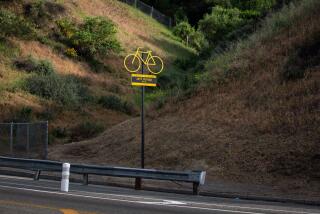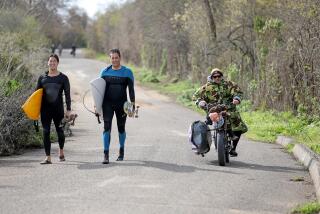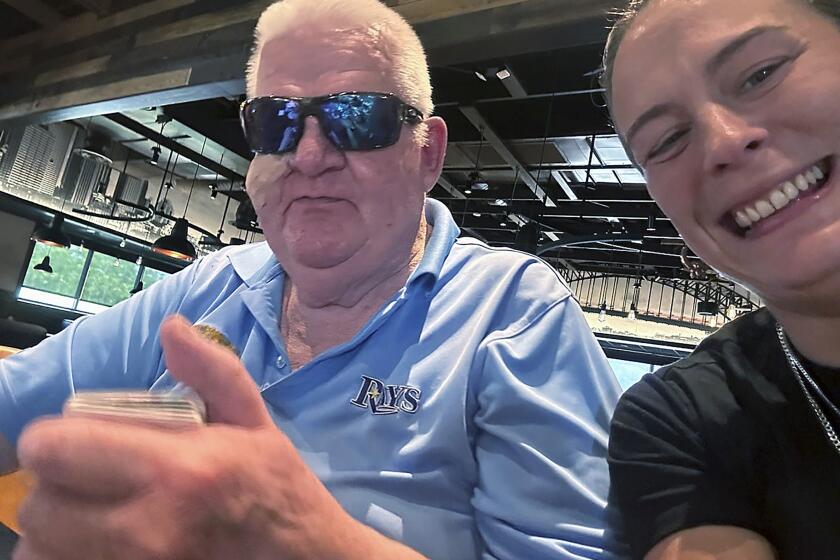Medical Experts Urge Cyclists to Use Helmets
WASHINGTON — One death a day and one brain injury every four minutes could be prevented if bicyclists would just wear helmets, experts say.
Most riders don’t listen. Many apparently figure a severe head injury won’t happen to them--and the odds are they’re right.
“Most of us have taken tumbles, and we have been very blessed in terms of not having had severe consequences,” said Dr. Gregory J. O’Shanick of Richmond, Va., national medical director for the Brain Injury Assn.
Of 67 million bicyclists in the United States, about 2,500 riders die and about 760 have brain injuries each year, O’Shanick said.
The trouble with going with the odds-against logic is that, for the unlucky, the results are devastating. “The brain is about the consistency of Jell-O,” O’Shanick said. “When your head comes into contact with the ground, what you see is microscopic tears in the actual substance.”
Although the brain has some ability to repair itself, crucial areas affecting such functions as memory, critical thinking and the ability to display appropriate judgment may be damaged, O’Shanick said. “It changes the child’s--or the adult’s--destiny,” he said.
Research shows that helmets reduce the chance of brain damage by 88%, but only about 18% of riders wear a helmet at least most of the time, according to a report by the Brain Injury Assn. and Prudential HealthCare.
The report was issued as the association and the managed care company launched a campaign to encourage riders to bike with their heads, not on them. The company is offering helmets as low as $10, a price similar to what inexpensive, safety-certified helmets can be purchased for at discount stores.
The coalition approach to helmet safety is typical. Helmet manufacturers run ads but don’t have the funds to promote their products as effectively as, say, Nike promotes footwear. Working with advocacy groups and other organizations extends the helmet companies’ media reach.
“Based on the budget, we probably do a fairly good job,” said Paul Thatcher, a spokesman for Bell Sports of San Jose. It also helps to have safety experts say the things it would look callously self-serving for Bell to say, Thatcher said. The idea is: “It isn’t just Bell Sports saying a helmet is good for you. It’s recognized by experts,” he said.
Public-private coalitions work, said Diane Thompson, an epidemiologist at Harborview Injury Prevention and Research Center, Seattle. Harborview’s pioneering effort, which started about 10 years ago, raised helmet use from virtually none to 70% of adults, 50% of children and 30% of teenagers in the Seattle area, she said.
Similar programs have been tried elsewhere in the country, but coverage is spotty. Riders on the West Coast, for instance, are more likely to use helmets, but riders in the Midwest generally don’t, Thatcher said.
More to Read
Sign up for Essential California
The most important California stories and recommendations in your inbox every morning.
You may occasionally receive promotional content from the Los Angeles Times.










